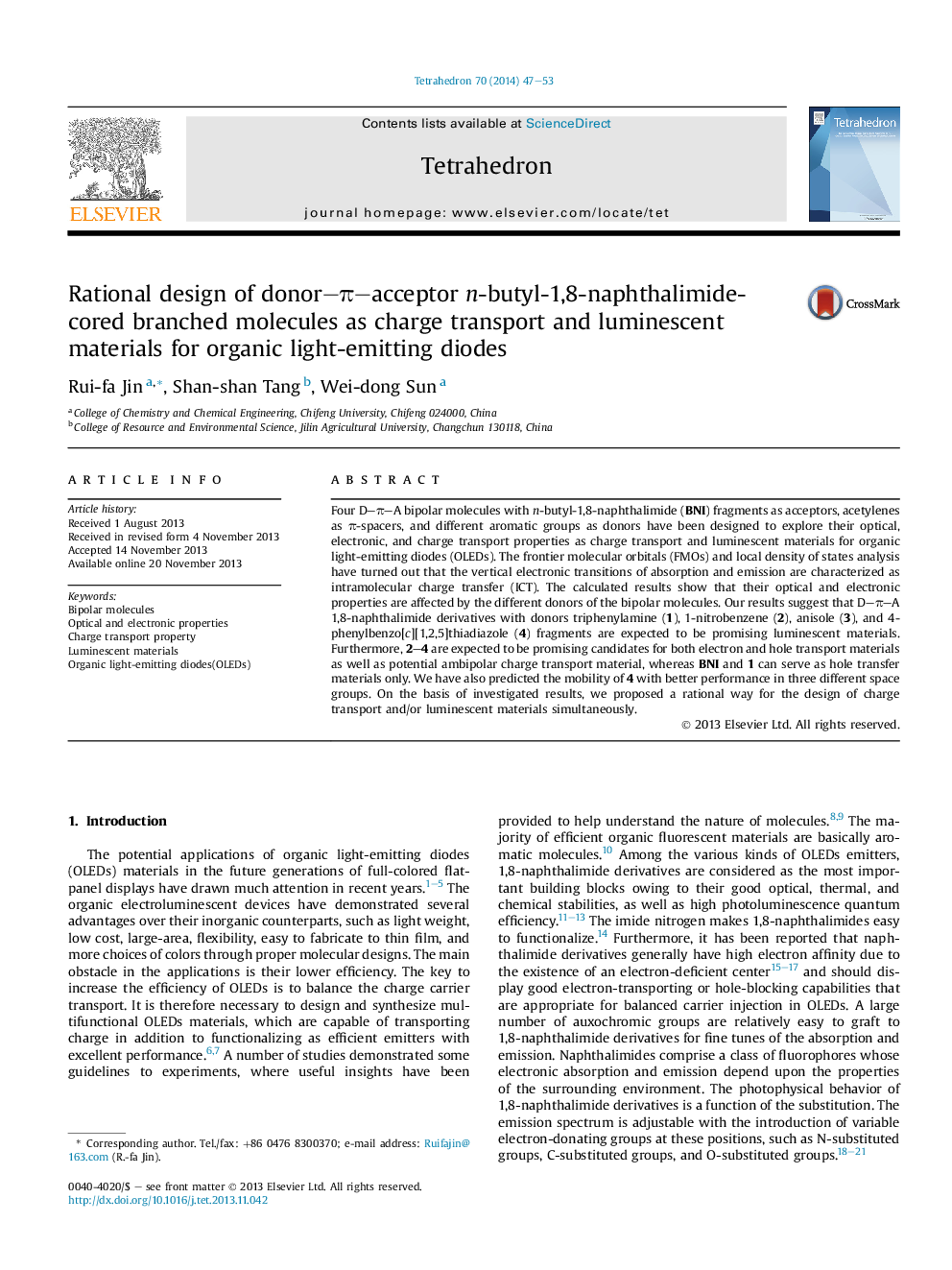| Article ID | Journal | Published Year | Pages | File Type |
|---|---|---|---|---|
| 5216390 | Tetrahedron | 2014 | 7 Pages |
Four D-Ï-A bipolar molecules with n-butyl-1,8-naphthalimide (BNI) fragments as acceptors, acetylenes as Ï-spacers, and different aromatic groups as donors have been designed to explore their optical, electronic, and charge transport properties as charge transport and luminescent materials for organic light-emitting diodes (OLEDs). The frontier molecular orbitals (FMOs) and local density of states analysis have turned out that the vertical electronic transitions of absorption and emission are characterized as intramolecular charge transfer (ICT). The calculated results show that their optical and electronic properties are affected by the different donors of the bipolar molecules. Our results suggest that D-Ï-A 1,8-naphthalimide derivatives with donors triphenylamine (1), 1-nitrobenzene (2), anisole (3), and 4-phenylbenzo[c][1,2,5]thiadiazole (4) fragments are expected to be promising luminescent materials. Furthermore, 2-4 are expected to be promising candidates for both electron and hole transport materials as well as potential ambipolar charge transport material, whereas BNI and 1 can serve as hole transfer materials only. We have also predicted the mobility of 4 with better performance in three different space groups. On the basis of investigated results, we proposed a rational way for the design of charge transport and/or luminescent materials simultaneously.
Graphical abstractDownload full-size image
